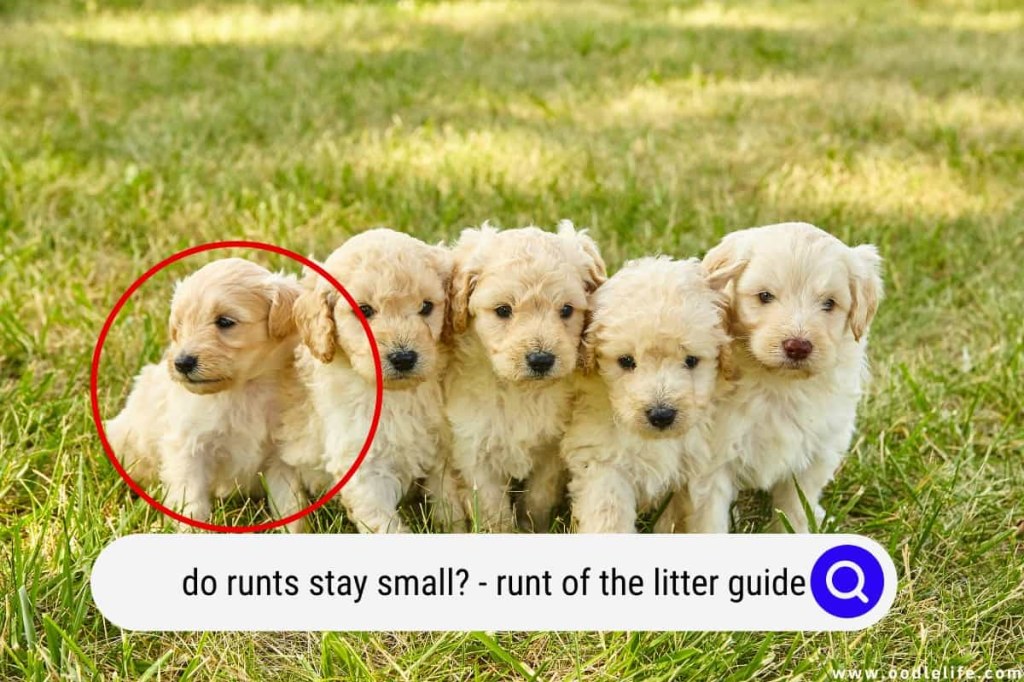Unveiling The Mystery: Is There Always A Runt In A Litter Of Puppies? Discover The Truth Now!
Is There Always a Runt in a Litter of Puppies?
Introduction
Hello, Puppies Lover! If you’re a dog enthusiast, you’ve probably come across the term runt when talking about litters of puppies. A runt is the smallest or weakest puppy in a litter, often facing challenges in their early stages of life. But is there always a runt in a litter of puppies? Let’s explore this fascinating topic and uncover the truth behind it.
Before we dive in, let’s understand that every litter is unique, and there might be variations in the number, size, and health of puppies. However, it’s common for litters to have a runt, which adds an interesting dynamic to the nurturing process of the mother and the owners.
1 Picture Gallery: Unveiling The Mystery: Is There Always A Runt In A Litter Of Puppies? Discover The Truth Now!

Now, let’s embark on this journey to uncover the mysteries of runts in litters of puppies.
What is a Runt?
When we talk about a runt in a litter of puppies, we refer to the smallest or weakest puppy. The term runt is often used to describe the underdeveloped or disadvantaged member of the litter. Runts are typically smaller in size and sometimes face health challenges, making their early days more demanding than their siblings.

Image Source: oodlelife.com
The presence of a runt can be quite fascinating, as it raises questions about the survival of the fittest and the dynamics of nature’s selection process. Many dog owners and breeders pay special attention to runts, ensuring their proper care and support to help them thrive.
Why is There a Runt?
The occurrence of a runt in a litter can be attributed to several factors. One of the main reasons is natural variation in birth weight. Just like human babies, puppies can have different birth weights, and the runt is the one on the lower end of the spectrum.
Another factor that contributes to the presence of a runt is competition within the womb. Puppies share the limited space in their mother’s womb, and the stronger ones might hinder the growth and development of their smaller siblings.
Genetics also play a role in determining the presence of a runt. Sometimes, certain genes can lead to smaller or weaker puppies, resulting in a runt in the litter.
When Does a Runt Appear?
The emergence of a runt in a litter becomes evident during the early stages of puppyhood. While all puppies are generally born with similar sizes, the runt starts to show its smaller stature and weaker disposition as they grow alongside their siblings.
However, it’s important to note that not all puppies that appear small initially are runts. Some puppies may experience growth spurts and catch up in size with their littermates as they mature.
Where Can We Find Runts?
Runts can appear in any litter, regardless of the breed or the pedigree of the parents. Whether you have a litter of purebred puppies or a mix, there’s always a possibility of a runt being born.
It’s important for breeders and owners to be aware of the potential presence of runts in their litters and provide them with the necessary care and attention they require.
Who Takes Care of the Runt?
The responsibility of caring for the runt primarily falls on the mother dog. Mother dogs have an innate nurturing instinct and usually provide extra care and attention to their weaker puppies.
However, it’s crucial for owners and breeders to closely monitor the runt’s progress and assist the mother if necessary. This can include ensuring the runt gets enough nutrition, warmth, and medical attention to give them the best chance at a healthy life.
How Can We Help a Runt Thrive?
If you find yourself in a situation where there’s a runt in a litter of puppies, there are several steps you can take to help them thrive:
1. Monitor their progress closely and consult with a veterinarian for guidance and advice.
2. Provide the runt with a separate feeding area to ensure they get enough nutrition without facing competition from their littermates.
3. Keep the runt warm and comfortable, as they may have difficulties regulating their body temperature.
4. Offer additional feeding sessions throughout the day to ensure the runt receives enough nourishment.
5. Socialize the runt with their littermates and other dogs to help them develop necessary social skills and confidence.
Advantages and Disadvantages of Having a Runt
Like everything in life, having a runt in a litter of puppies comes with its own set of advantages and disadvantages. Let’s explore both sides:
Advantages
1. Emotional Connection: Owners often form strong emotional bonds with runts, as their vulnerability and struggle for survival can be endearing.
2. Unique Personality: Runts often develop unique personalities due to their experiences and the extra care they receive from their owners.
3. Resilience: Runts can demonstrate remarkable resilience and determination, overcoming their challenges and growing into strong, healthy dogs.
Disadvantages
1. Health Issues: Runts may face more health issues compared to their littermates, requiring additional veterinary care and attention.
2. Developmental Delays: Due to their smaller size and potential health concerns, runts may experience developmental delays, requiring extra time and effort for training.
3. Competitive Environment: In a litter, runts might face competition from their stronger siblings for resources, such as food and attention, which can impact their growth and well-being.
FAQs (Frequently Asked Questions)
Q: Can a runt catch up with its littermates in size?
A: Yes, in some cases, runts can experience growth spurts and catch up in size with their littermates as they mature. However, it’s important to monitor their progress and consult with a veterinarian if needed.
Q: Are runts less intelligent than their littermates?
A: No, runts are not necessarily less intelligent than their littermates. Intelligence can vary among puppies regardless of their size or position in the litter.
Q: Can runts become healthy adult dogs?
A: Absolutely! With proper care, nutrition, and medical attention, runts can grow up to be healthy adult dogs. However, it’s essential to monitor their health throughout their lives.
Q: Should I adopt a runt?
A: Adopting a runt can be a rewarding experience. However, it’s important to consider the potential challenges that come with their size and health concerns. Be prepared to provide the necessary care and attention they require.
Q: Can runts be bred successfully?
A: Yes, runts can be bred successfully. However, it’s crucial to consult with experienced breeders and veterinarians to ensure the health and well-being of the runt and the entire litter.
Conclusion
In conclusion, while there isn’t always a runt in a litter of puppies, their presence adds a unique aspect to the nurturing process. Runts may face challenges due to their smaller size and potential health issues, but with proper care and attention, they can thrive and grow into healthy adult dogs. Whether you have a runt in your litter or are considering adopting one, remember that their size doesn’t define their potential. Embrace the journey and provide them with the love and care they deserve.
Final Remarks
The information provided in this article is intended for educational purposes only. It’s important to consult with veterinarians, breeders, and other professionals to ensure the health and well-being of puppies, especially runts. Each litter is unique, and individual circumstances may vary. Remember to provide proper care and attention to all puppies, regardless of their size or position in the litter.
This post topic: Puppies



